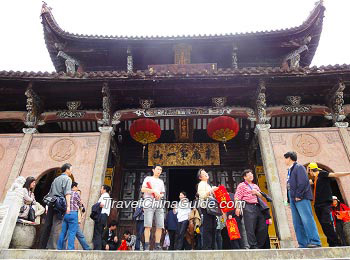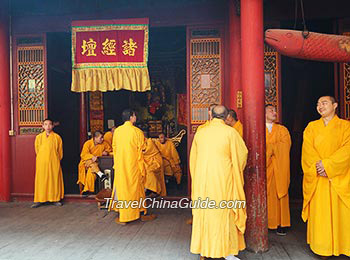Chizhou Travel Guide
Chizhou Facts
Chinese Name: 池州市 (chí zhōu shì)
Population: 1,622,000
Area: 8,399 square kilometers (3,243 square miles)
Location: in the southwest of Anhui, eastern China
Administrative Division: 1 district (Guichi); 3 counties (Dongzhi, Shitai, Qingyang)
Area Code: 0566
Zip Code: 247000
GDP (2018): CNY 68.49 billion (USD 10.35 billion)
Chizhou is located in the southwest region of Anhui Province, neighboring Tongling in the east and Huangshan in the south. It is separated from Anqing by the Yangtze River and Jiangxi Province by Mt. Lushan. Chizhou has a profound cultural heritage. Many famous ancient Chinese poets, such as Li Bai and Du Mu visited Chizhou and wrote poems. Chizhou has formed its unique Buddhist culture, poetry culture, drama culture and tea culture. Known as the natural oxygen bar, Chizhou is an ideal tourist resort with beautiful ecological environment. It has Mt. Jiuhua, one of the four famous Buddhist mountains in China, and the Guniujiang Nature Reserve, the animal and plant gene pool in east China.
Attractions
Mt. Jiuhua: a national AAAA level scenic and historic interest area, not only boasts a breathtakingly beautiful natural landscape, but also a famous international Buddhist site with profound Buddhist culture reputed as one of the four Buddhist holy mountains in China.
|
|
Guniujiang Nature Reserve: is spoken of as the gene pool of animal and plant life in East China. Guniujiang is main body of the west extensions of Mt. Huangshan, located at the junction of Shitai and Qimen counties in southern Anhui.
Other Scenic Spots: Qiupu River, Dawang Cavity, Penglai Cavern.
How to get to Chizhou
1. Chizhou Jiuhuashan Airport is about 20 km (12 mi) to downtown Chuizhou which operates flights to/from Beijing, Shanghai, Shenzhen... To travel to downtown, passengers can take shuttle bus and city bus.
2. In addition, yachting from Shanghai, Nanjing, Tongling, Anqing, Jiujiang, Hankou, Yichang and Chongqing is another wonderful choice to travel to the city directly.
Note: Chizhou Bus Station is to the west of the Railway Station. This region is the road transport hub of the city. The city's passenger dock is situated in North Changjiang Road.
Weather
It bears a subtropical monsoon climate with humid and temperate weather, clear four seasons, sufficient rainfall and enough sunshine. The annual average temperature falls around 16.5

